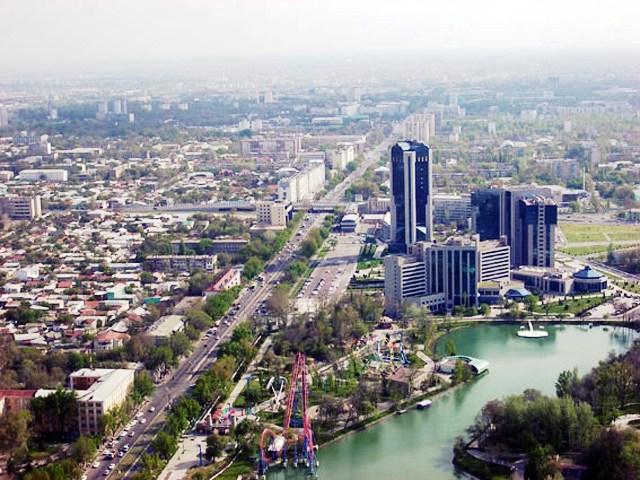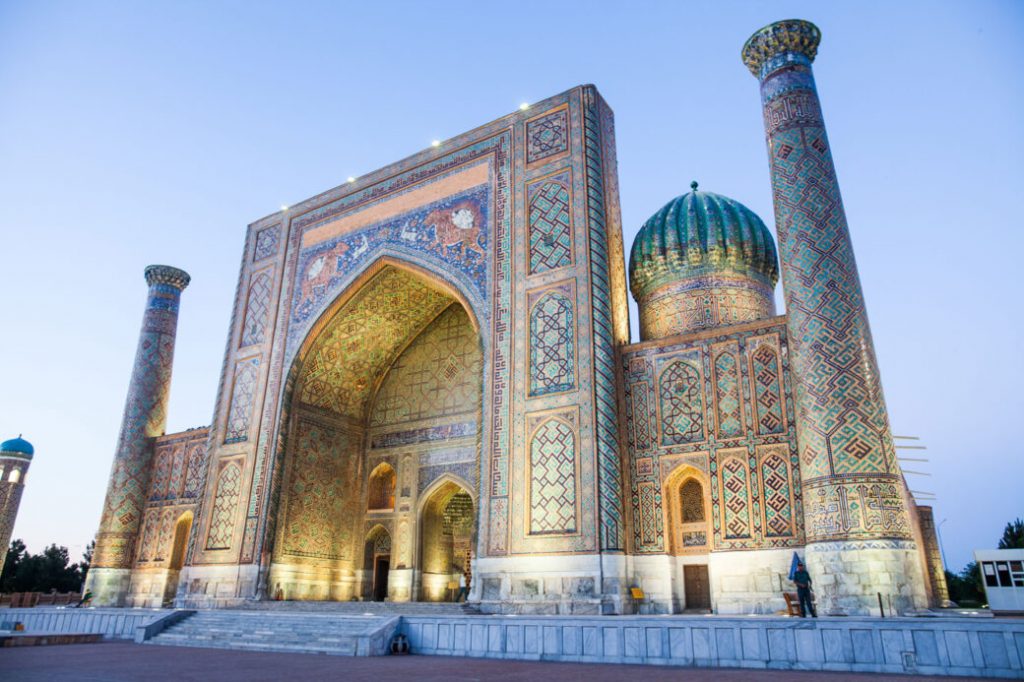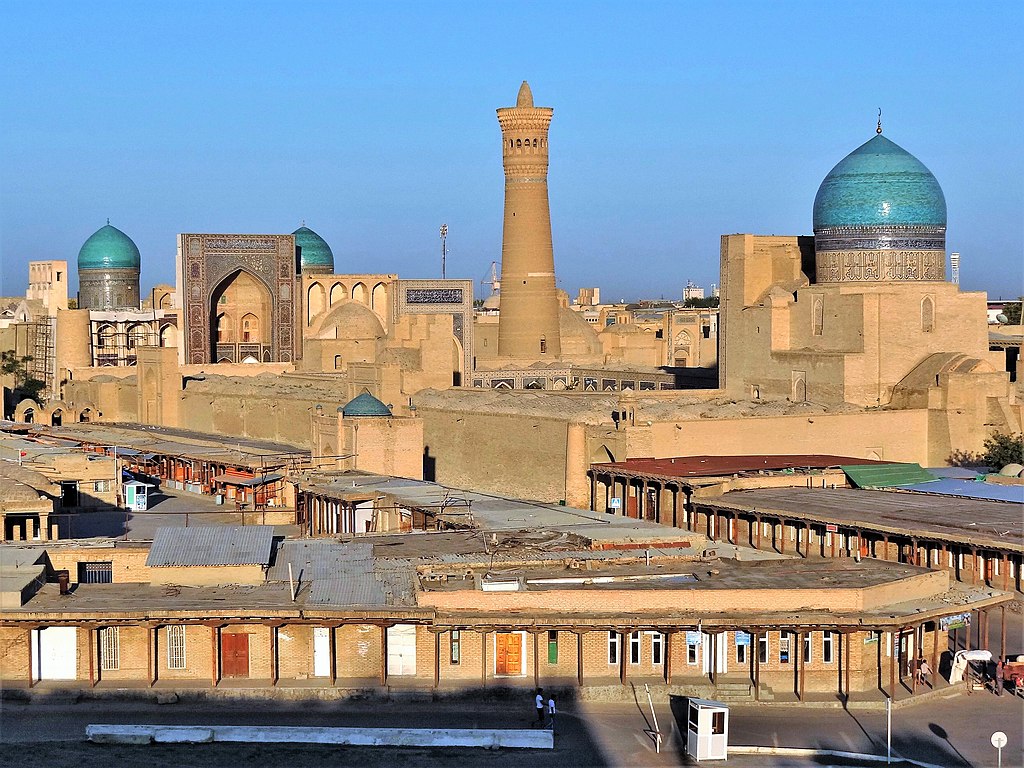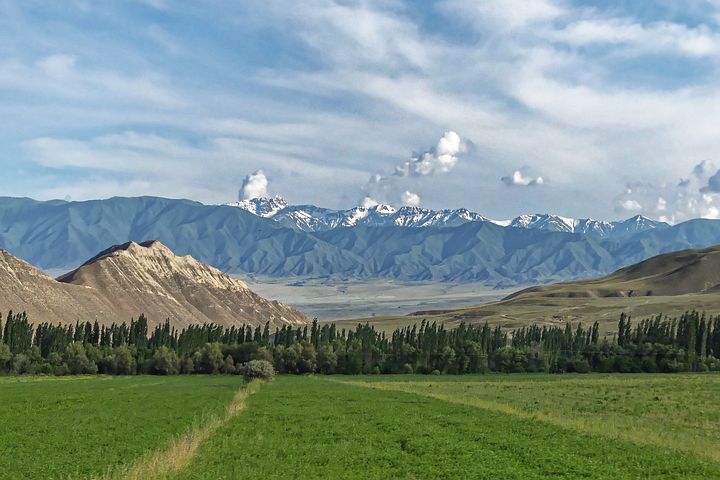Uzbekistan, the Central Asian country that offers history and culture. Find out the main places to visit in Uzbekistan, the land of Tamerlane
What to see in Uzbekistan?
Tashkent – “The Star of the East”
Tashkent is the capital of Uzbekistan and located at an altitude of 489 meters, it is the center of all of Central Asia. Tashkent is the largest and most cosmopolitan city in this part of the world, it is the major economic and cultural center of the Uzbek republic, home to cotton and silk mills, mechanical plants, chemical industries and plays an important role as a communications hub. Little remains of its past due to an earthquake that destroyed it in 1966 and above all from the realization in the Soviet era of an urban plan drawn up since 1916. The result is that today’s Tashkent has had the typical appearance of a European city oriental, with monumental and administrative buildings, immense parks and huge dormitory-condominiums that inevitably refer to the years of the Stalinist regime. From its past Tashkent has preserved the Eski Shakhar, i.e. the old city, made up of narrow streets and modest houses, but also of ancient madrasas (Islamic schools) and magnificent mosques. Kukeldash madrasah is one of the most important madrasahs, originating from the 16th century. Right next door is the Grand Chorsu Bazaar. A short distance away is the Jami mosque, dating back to the 15th century.

Samarkand – “Turquoise Paradise”
Samarkand is the third largest city in Uzbekistan and the capital of the Samarkand region. The city is mostly known for being at the center of the Silk Road in the route between China and the West. The city is located 702 meters above sea level and although it is an important city in Uzbekistan, most of the inhabitants are Tajik-speaking. In 2001, after several attempts, UNESCO listed the 2,700-year-old city as a “Crossroads of Cultures” as a World Heritage Site. Samarkand was once the richest city in Central Asia and was part of the Persian Empire for most of its history. Founded about 700 BC, it was already the capital of the Sogdian satrapy under the Achaemenids of Persia when Alexander the Great (known in the area as Iskander Khan) conquered it in 329 BC. Under the Sasanians, Samarkand flourished and became one of the most important cities of the Empire. Subsequently the city experienced the Arab invasion (which brought the alphabet and converted it to Islam), that of the Persians and several successive Turkish dynasties. In 1370 Amir Temur (Tamerlane) decided to make Samarkand a beautiful city and make it the capital of his vast empire. For 35 years the city was rebuilt and craftsmen and architects from the most diverse parts of the Timurid Empire worked there. Tamerlane grew the city, which became the center of the region called Transoxiana in the West. We have to say that even today Samarkand is a magical and mystical city known all over the world for its majestic history and fascinating beauty.

Bukhara – “The Pearl of Islam”
Bukhara is the capital of the Bukhara region, since 1993 the historic center has been under the protection of Unesco as a World Heritage Site. It has been one of the most important cities in Central Asia for centuries. During the Mongol invasion, it was destroyed by Genghis Khan and then conquered in 1370 and rebuilt by Tamerlane the famous Turkish/Mongol general. It later became famous as the Khanate of Bukhara and saw its economy develop considerably thanks to the rich merchant trade that involved it, arising on the silk road. Thanks to the gas fields, the city is also highly developed from a commercial point of view. There are many historical and cultural attractions to see in Bukhara: the Ark citadel which is the original nucleus of the city, inhabited since the 4th century BC, hit in 1920 by a fire and then rebuilt. The monumental entrance to the citadel consists of a gate flanked by two tall towers flanked by a 17th-century pavilion used as a concert hall. Noteworthy is the palace of the Emir with the throne room and the audience halls, the mausoleum of Ismail Samani, founder of the Samanid dynasty, this small, magnificent building is located not far from the Ar. It was built in the 10th century for him, his father and nephew, the structure was built with remarkable skill with thick walls that hasn’t needed much maintenance over the centuries. The Lyabi-Hauz complex was finished in the early 1700s, and means ‘around the pool’, built around a water reservoir, a perfect location to take a break in the hot Uzbek summer. In the afternoon, the elderly meet at the tables in the shade of the large alleafy bers playing cards, drinking tea and smoking sisha. The beauty is not only in the swimming pool and in the coolness of the trees… the whole square is a complex made up of various madrasas (Muslim high schools) from the 17th century and a caravanserraio (place where the caravans stopped at night or for a few days while they traded). Imposing and humble place together, unforgettable.

Khiva – “A surprise for the eyes”
Among the cities of the Silk Road that exert the greatest charm there is certainly Khiva, located in the Khorezm region. Its birth is rooted in legend, it is said that Khiva was founded when Sem, son of Noah, dug a well in this area. Historically, however, it is established that the city existed in the 8th century as a minor fortress and trading post along the branch of the Silk Road towards the Caspian Sea and the Volga. In the early 16th century Khiva became the capital of the Timurid empire: it was famous for a thriving slave market. Years of struggles between the various tribes followed and the Russians tried several times to conquer the region without success until 1873 when Khiva was conquered. After the fall of the Russian Tsar in 1924 the Uzbek Soviet Republic was formed and Khiva became part of it. Modern Khiva is a strange city but it is worth walking through the historical monuments. The historic center, unlike those of other central Asian cities, has remained intact, well preserved and is rightly defined as an open-air museum. Khiva for many is a magical city with the appearance of a rectangular fortress with imposing walls and 4 gateways inside which there are finely decorated palaces and mosques, minarets, squares and the caravanserai. Khiva was the first place in Uzbekistan in 1991 to be included among the sites protected by UNESCO as a World Heritage Site.

Fergana Valley – “Pearl of Central Asia”
Fergana is situated in the eastern part of the country bordering southern Kyrgyzstan and northern Tajikistan, it is a most flourishing and richest region in the country. The name “Pearl of Central Asia” has rightly been attributed to this rich and picturesque valley which has always played a significant role in the history and culture of Central Asia. The Fergana Valley is truly a unique portion of the Orient and in the past the valley has been the center of various civilizations.
In the Fergana valley, nature surprises and enchants with its variety of colours, landscapes rich in plants, crops, flowers and the scents of spices. The Sirdarya River, formed by the Karadarya and Naryn Rivers, flows along the northern edge of the valley. In the Fergana valley, the cities of Fergana, Kokand, Andizhan, Namangan are located, it is rightly called the “golden valley”.

The Ferghana Valley is not as spectacular as Samarkand Khiva and Bukhara, its attractions are more subtle and for the connoisseur and are not always revealed at first glance. Here are the factories of a stupendous and refined silk in Margilan, the ceramic workshops of Rishton, which you will then find for sale in all the souvenir shops of Uzbekistan, the knife and sugar workshops in Chust, the colorful monuments of Kokand. Beyond these highlights though, traveling the Ferghana Valley becomes an exploration of many stories.
The borders in Zigzag now locate most of the Ferghana Valley in Uzbekistan but in ancient times the territory beyond the borders was part of the Valley.
Kokand is the city with the most architectural attractions in the Ferghana Valley and is worth a stop to visit the palace of Khudoyor khan and the Friday mosque with its 113 wooden pillars.
Ferghana is an extremely new city, founded in 1876 and is the capital of the region. It is a clean and very modern and very Western city, home to a large Russian colony and an important center for oil extraction.


